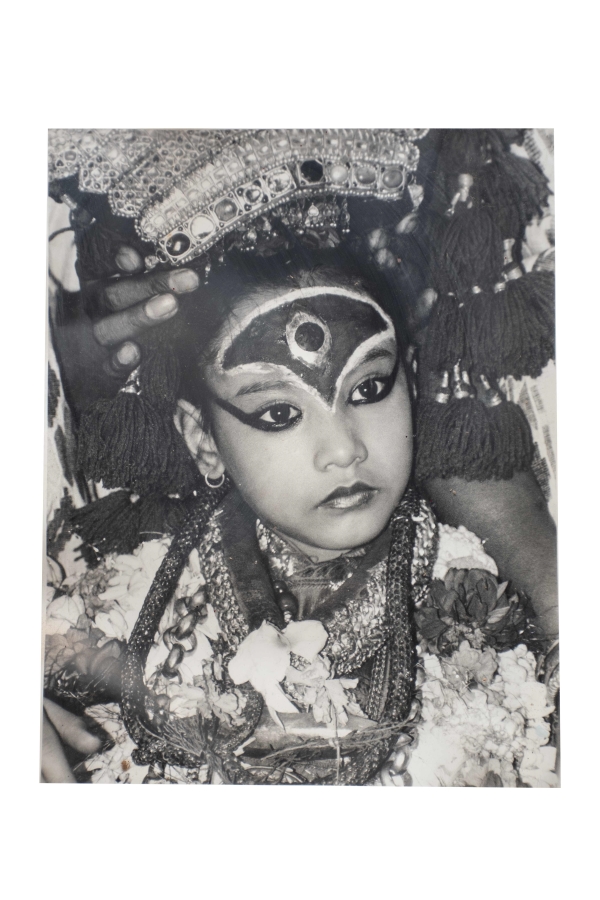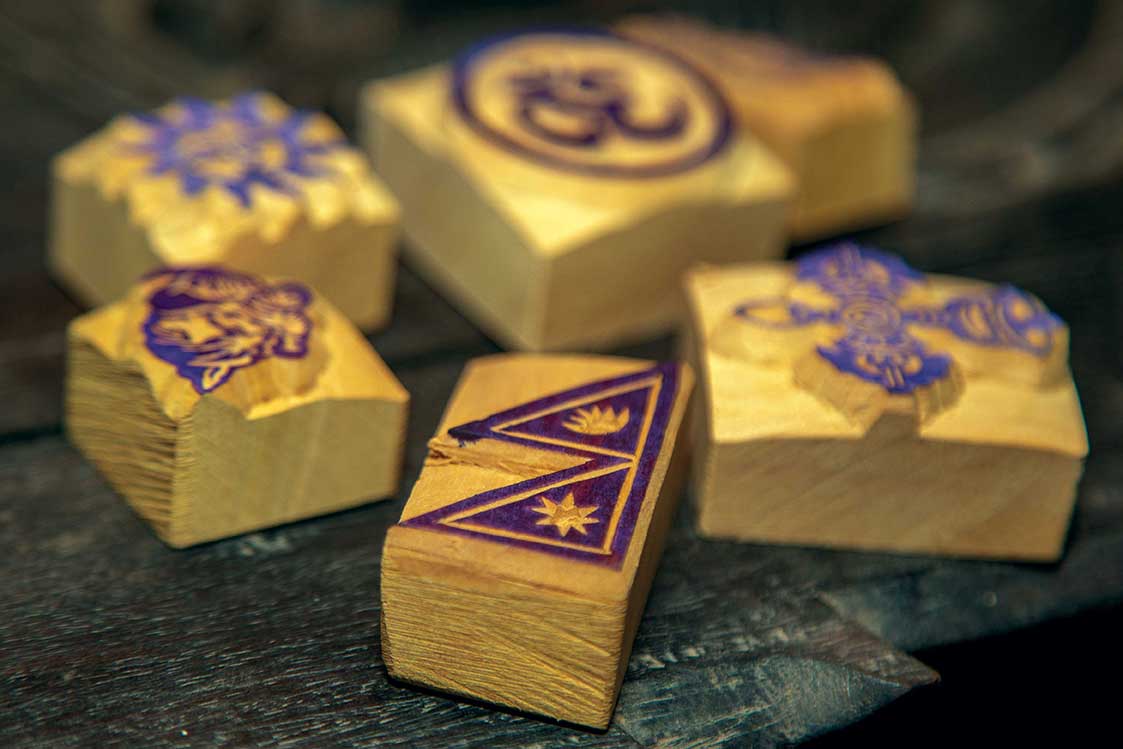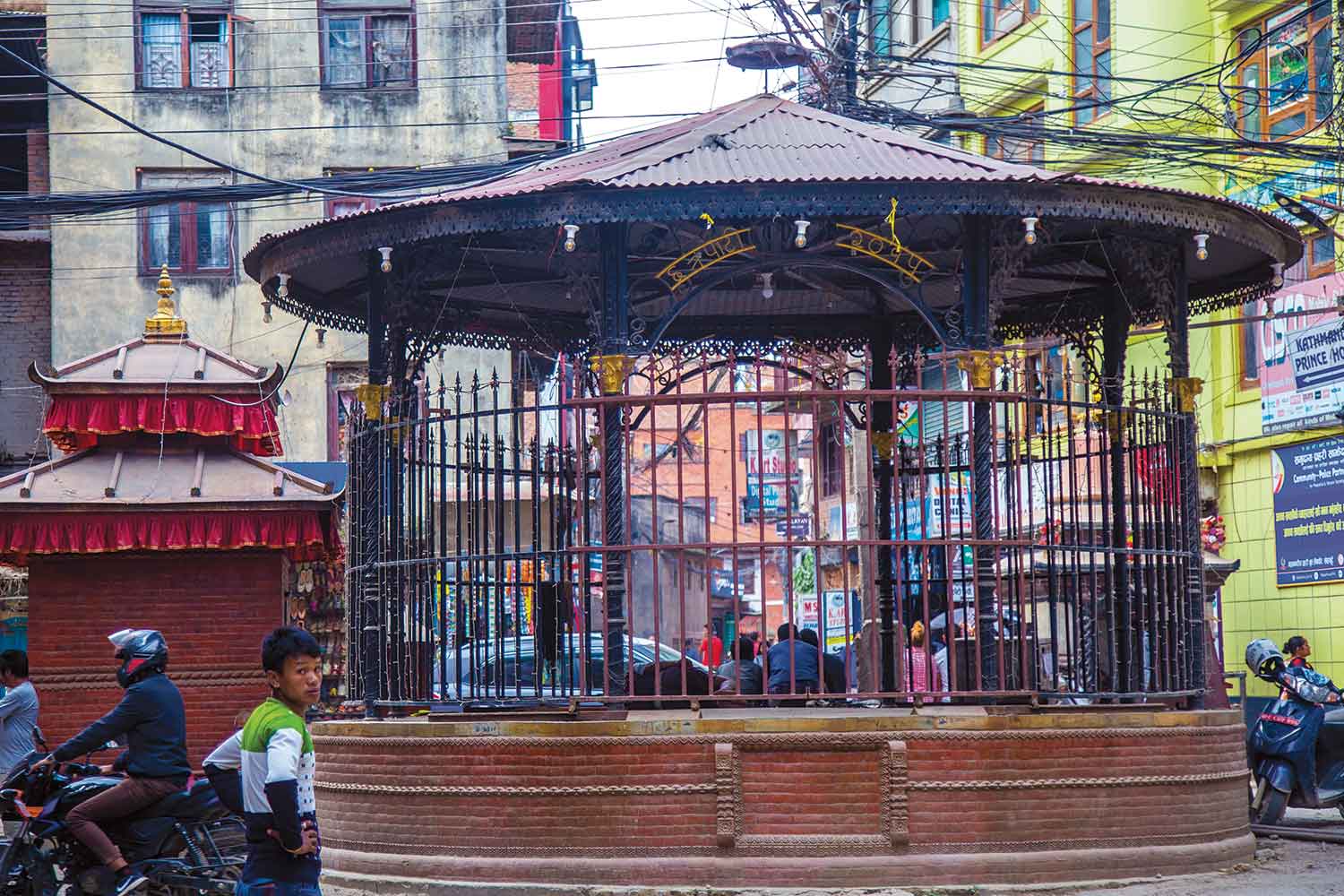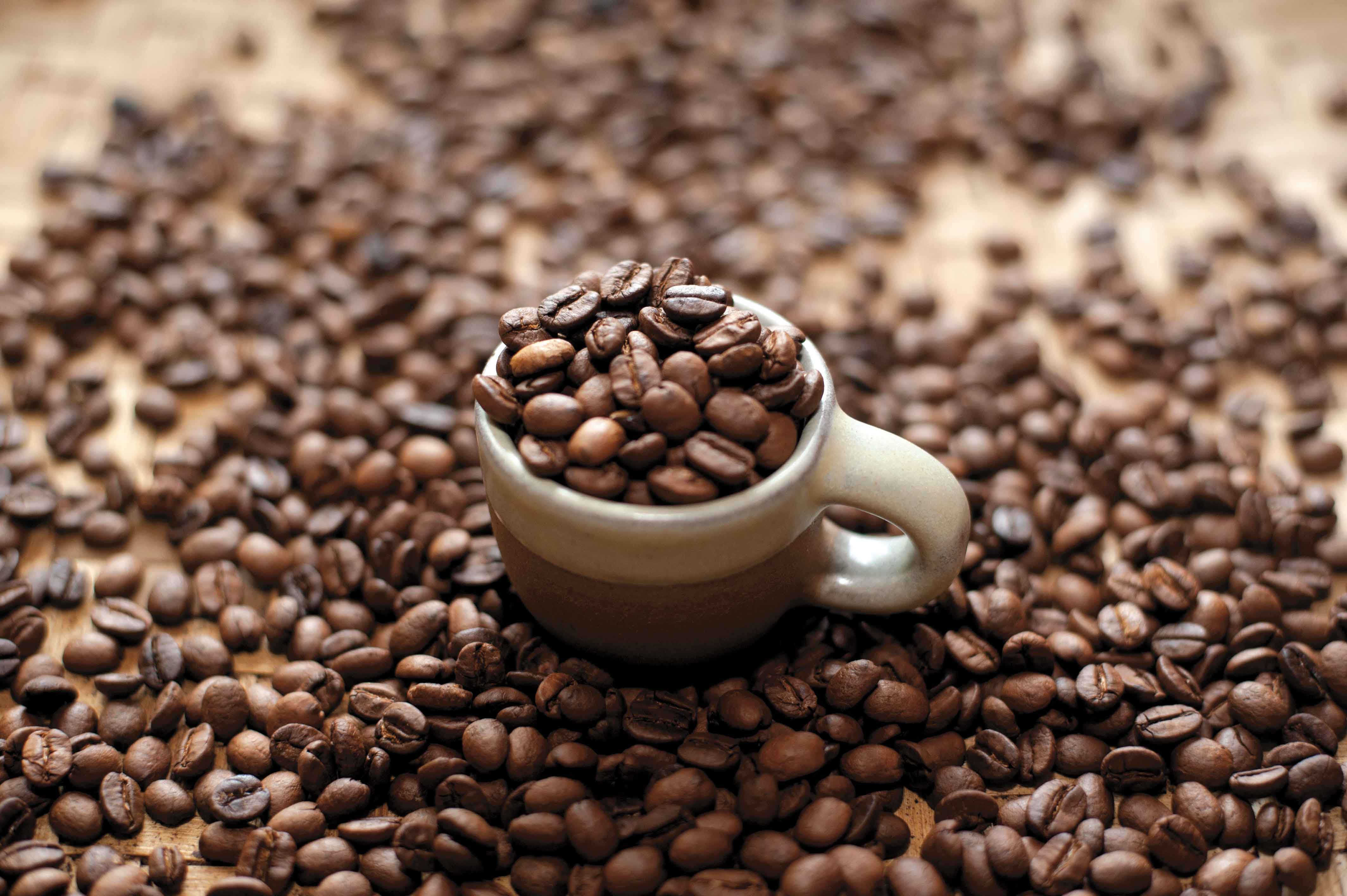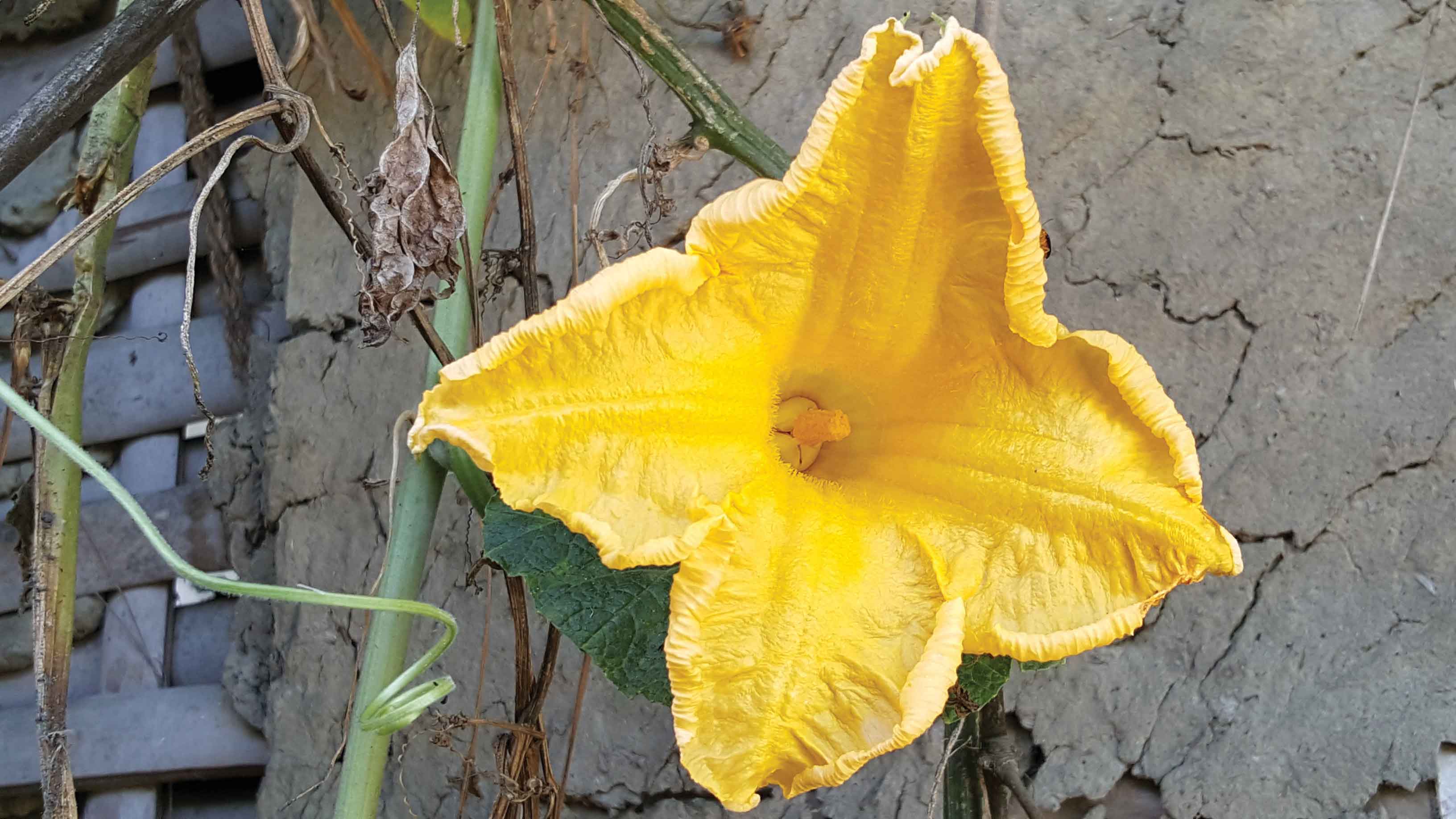No cookbook or well-used recipe notes sit on the kitchen table at Lochana’s house where I am celebrating Dashain with the family. There are no instructions or guidelines and no exact measurements for the Nepali sweet dough called roth. Radhika, Lochana’s sister who is mixing the ingredients, just knows how to make it. When the dough feels too dry, she adds an extra dollop of ghee, maybe a tablespoon, or maybe a tablespoon-and-a-half. To add sweetness, Radhika sprinkles in sugar, not a precise amount, just enough for her liking. She is whipping up the dough, which includes semolina, flour, sugar, water and ghee, using nothing but a discerning eye and her culinary intuition.
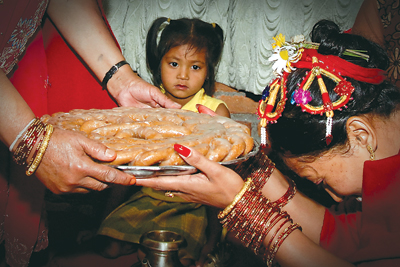
laakha-mari is predominantly used in Newari marriage ceremonies
“You want to add enough margarine or ghee to make the dough stick together, but still be crumbly,” Radhika instructs, as she blends the ingredients with her hands. The tantalizing scent of heating oil is slowly permeating every corner of the kitchen, enveloping us in a homely, comforting smell that seems appropriate for Dashain, the most auspicious holiday in Nepal that calls for several weeks of extended family gatherings.
“We make roth mostly for special days like Dashain and Tihar,” Radhika says, as her red glass bangles clink together while she flips the roth in the frying pan. “We use sweets in all kinds of festivals. For example, sel roti [similar to a donut] we use especially for Deepawali.”
When I began my investigation into Nepali sweets, I thought the sugar-laden treats would be of similar value and importance as they are in the United States, where I am from. At home, we may grab a glazed donut for a snack on our lunch break, enjoy a fresh-baked apple pie during the golden summer months or snack on dark chocolate for an after-dinner treat. But at home, sweets do not hold a great cultural significance: they are enjoyable-to-eat after meals, as an afterthought while on the run or to share with friends, but their importance disappears after the last pie crumb is consumed and the final chocolate morsel has melted under a tongue.
But, the more I look, the more I see Nepali sweets popping up during all sorts of culturally significant times: in religious festivals, during pujas and on tray offerings made to the gods. It seems that the many Hindu gods worshipped by Nepalis enjoy versions of traditional fried treats just as much as Nepalis themselves.
I soon begin to understand that sweets in Nepal are nothing like their counterparts in the U.S. While many are very basic, most being some form of flour, sugar and ghee (clarified butter), they are inextricably linked with Nepali cultural values, festivals, family gatherings and the Hindu religion.
At a nondescript sweet shop tucked away in one of the Patan’s meandering lanes is a typical Nepali snack stall selling sweets and savories, mostly fried. The young proprietress, Sanju Tamrakar, sits on a stool behind stacks of golden brown, coiled jerry. Jerry are thin coils of fried dough that, after crisped in oil, are soaked in sugar syrup. The end result is a delicate yet crunchy snack, that bursts with liquid sugar after every bite.
“People use these sweets as a simple breakfast in the morning. We also use them for religious purposes when we make the ceremony for Ganesh,” Tamrakar says about the famous elephant-headed god.
The more I ask about Nepali sweets, the more I am told about Lord Ganesh’s affection for the fried, sugary delectables. Ganesh apparently has an incurable sweet tooth, which, as refl
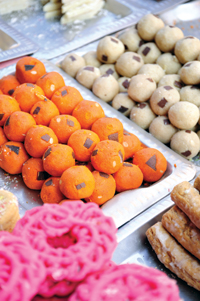
Nepali sweets are visually tempting as they are delicious - pictured here are laddoos and jerry
ected in his depictions, probably explains why he has a rather prodigious belly. Many Nepalis believe that if they offer 108 sweets to Ganesh, the god who removes obstacles for the deserving, he will assist them with their wish.
“Laddoo is a special favorite of Ganesh,” says Rikesh, co-owner of Nanda Mithai Bhandar (Nanda’s Sweets Store), one of the oldest and most famous sweet shops in Patan. And if Rikesh says Ganesh likes laddoo, the small orange-colored sweet ball, it must be true, for he truly lives and breathes Nepali sweets every single day. The shop, which was started by his grandfather, is tucked in a small lane behind Patan’s Krishna Mandir temple and is constantly bustling with customers buying Nepali treats like jerry, jo prasad, aithya, anarsa, balbara, panjafi and phini. Behind the front counter are shelves stacked precariously high with sweets and behind that are massive metal woks brimming with bubbling hot ghee. The shop is housed in a traditional Newari-style, Malla-period building and, from decades of sweet making, many of the walls are thick with layer upon layer of slick, black grease: spatters that have escaped while browning all variations of rolled, twisted and hand-cut dough shapes.
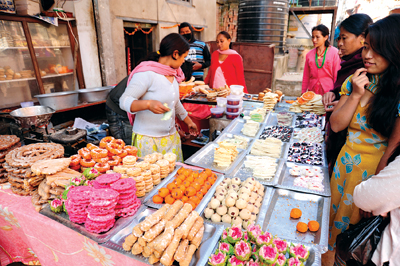
A typical Nepali sweet-meat shop
A number of categories and subcategories exist within the realm of the Nepali sweet business. One of the largest categories and, according to Rikesh, most popular is laakha-mari, which are typically eaten at engagement celebrations and marriage ceremonies. The term can roughly be translated as “ceremonial sweet bread.”
“Years back, there were no cakes and no invitations to marriages,” explains Rikesh, as the warm smell of frying dough wafts through the sun-speckled courtyard behind his shop. “Sweets are still used like an invitation card. The bride sends them to the groom’s house and gives them to relatives as an invitation, sort of like engagement cakes.”
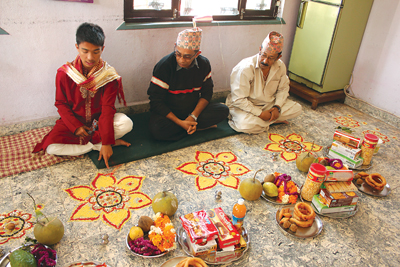
A typical Nepali Bhai Tika setting in which Sel Roti is extensively used
Likewise, if the groom’s family approves of the union, they will send glazed laakha-mari, along with fruits, nuts and flowers, to the bride’s family. According to Jyoti Pathak’s book, Taste of Nepal, the preparation of laakha-mari, a laborious task that requires much skill and care, is especially important among Nepal’s Newar community. This fact becomes evident when Rikesh leads me to the second story of Nanda Mithai Bhandar. There is a small assembly line of men carefully shaping and working the dough: one rolls it into coils, another flattens it with a rolling pin and a third drops the final rectangles into hot oil. The end product, which is fished out of the oil after five minutes, is a perfectly crisp and golden pastry puff, complete with innumerable layers of thin-as-tissue crust.
Within the laakha-mari category, there are a myriad of versions that are purchased for weddings and other religious ceremonies. There are large jo prasads, which are curly like jerry, and matha, which are 24-inches in diameter and are made of flour and ghee and painted with sugar. Then there are laakha-mari that are shaped like animals: fish, birds and frogs. In addition to their appetizing taste and smell, Nepali sweets are also famed for longevity, often staying fresh up to a month.
“Most sweets are flour mixed with ghee, fried and then dipped or painted with sugar, like a donut,” Rikesh says, as we watch one of his shop’s workers methodically coil lengths of viscous dough into hot ghee making what will eventually become the delectable, sugar-soaked jerry.
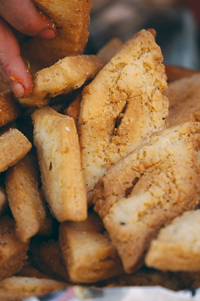
Roth
Back in Lochana’s kitchen at the Dashain celebration, Radhika has expertly rolled out the roth dough, scoured the top with a fork (a step that she says cannot be forgotten), sliced it into diamond shaped pieces and lightly placed them into a shallow pan one-quarter full of oil on low heat. The final batch of roth has just been taken out of the frying pan, dried on sheets of tissue paper and placed in the center of the table for the whole family to enjoy and savor.
“Try it!” Radhika says enthusiastically.
I pick one up, still warm from the fryer, and take a bite. It is perfect: crunchy and textured on the outside from the gritty semolina and soft, with the slightest chewiness, on the inside. Each member of the family gathers around the table to grab a few roth for themselves. This Nepali sweet, which is so simple, yet so delicious, brings us around the table during this Dashain. I’ve learned that the roth, similar to other varieties from laakha-mari to jerry, is like a binding agent in Nepali culture, which brings people together and add an extra hint of sweetness to everyday life. These mouthwatering and meaningful treats satisfy Ganesh’s sweet tooth, and they’ve surely satisfied mine as well.


